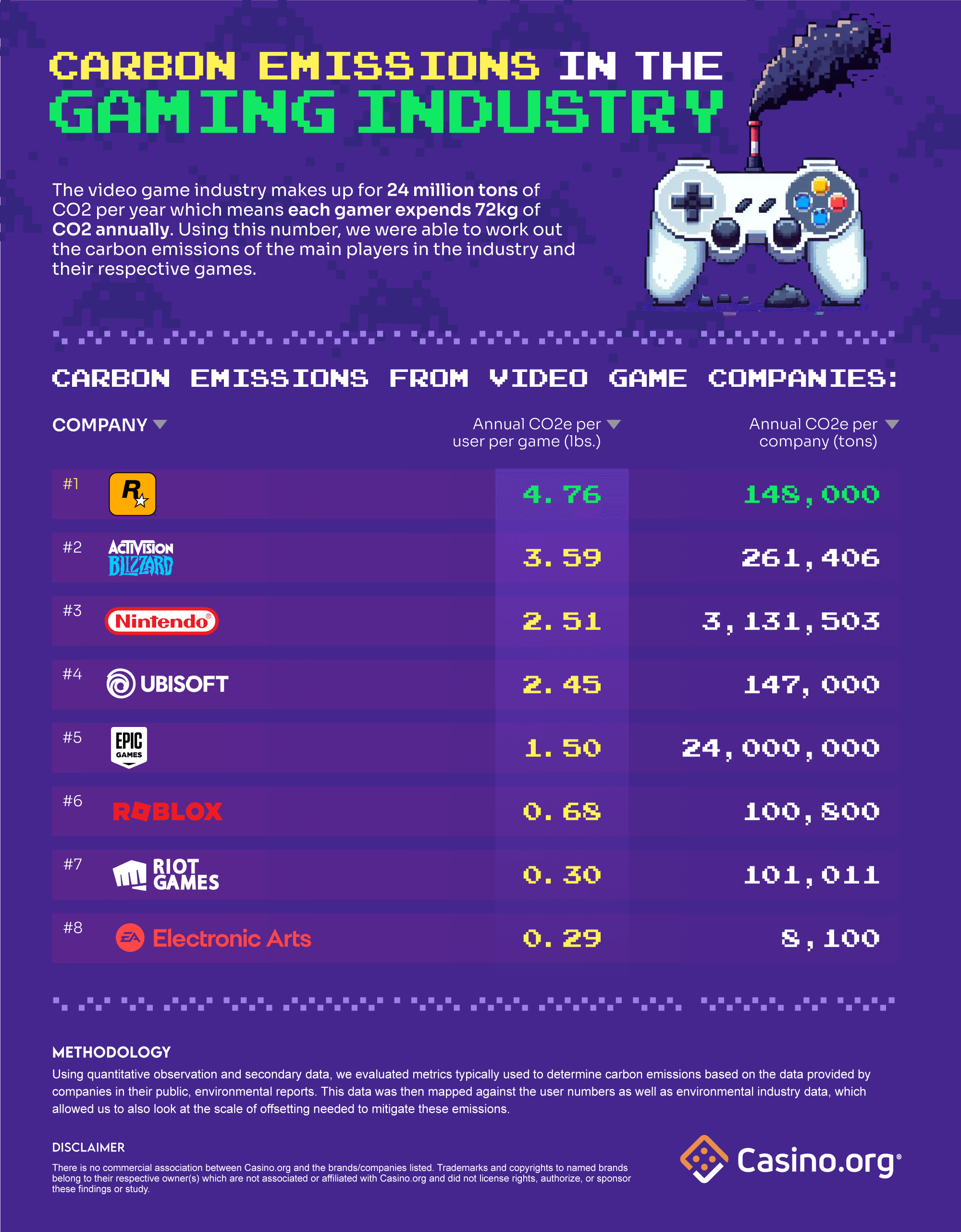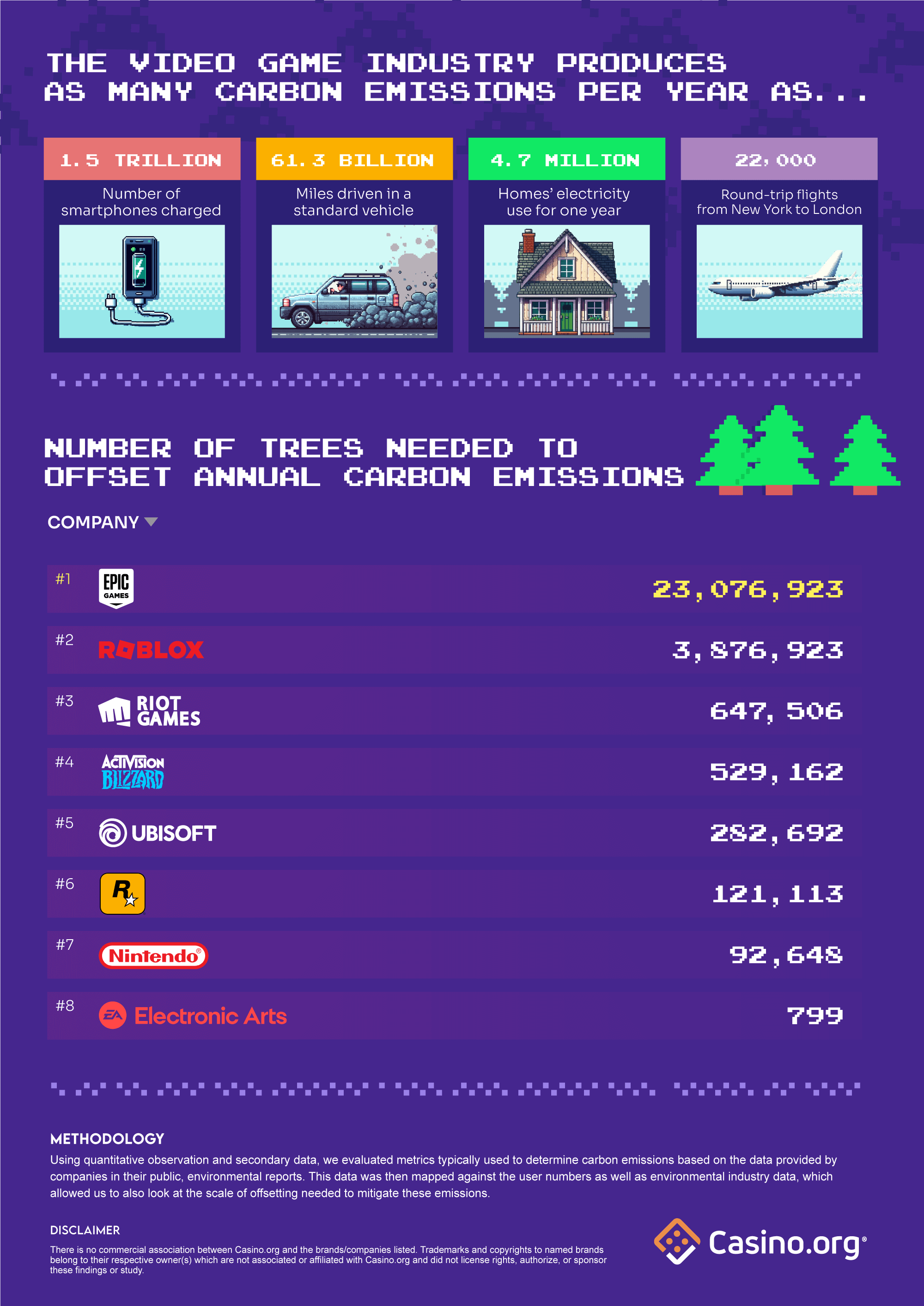Gaming’s Carbon Footprint: Examining the Environmental Impact of Popular Video Games
Few realize that the pastime of gaming-whether diving into open worlds or spinning reels on online slots-comes with a real-world environmental cost. From the energy-hungry consoles to the massive server farms powering multiplayer universes, video games have a tangible effect on global carbon emissions. As the industry rapidly evolves into an entirely digital realm, the way we play may have changed, but the hidden environmental toll remains a growing concern.
Understanding the Carbon Cost of Video Gaming
Today’s video games demand far more resources than their cartridge or disk-based ancestors. Cloud storage, frequent updates, millions of simultaneous online players, and sophisticated graphics require robust infrastructure and substantial energy. To estimate the carbon impact, several contributing elements were analyzed:
- Electricity consumed by gaming consoles, PCs, and peripheral devices
- Server usage for online gameplay, data storage, and cloud gaming
- Human labor involved in development, support, and maintenance
- Routine software updates and digital downloads
By reviewing the top 20 video games of the 21st century, it’s possible to pinpoint which titles are environmental outliers and which companies are leading the charge in sustainability. The following research also compares the major game publishers and draws practical parallels for context.
Main Findings at a Glance:
- Grand Theft Auto generates the highest estimated carbon emissions among all video games.
- Fortnite follows closely, ranking second in total emissions.
- Electronic Arts stands out as the publisher with the lowest average carbon output per player.
- An average gamer accounts for 158 pounds of CO2 equivalent annually.

How Carbon Emissions from Video Games Are Calculated
Estimating exact emissions is a challenge, partly due to limited transparency from many gaming companies. For publishers providing public data on their environmental performance, emissions per title could be determined by dividing their total emissions across their game catalog and factoring in usage. For those keeping statistics private, calculations relied on estimates based on company market share and the overall annual industry emissions-roughly 24 million tons of CO2 equivalent globally.
The Biggest Carbon Contributors in Gaming
Grand Theft Auto, particularly when considering its in-game themes of gas-guzzling vehicles and sprawling virtual cities, sits atop the leaderboard for carbon output. On average, each GTA player is responsible for approximately 4.76 pounds of CO2 equivalent per year-over 80% above the typical level of 2.01 pounds across all video games. This is roughly equivalent to covering more than 12,000 miles in a gasoline vehicle within a year-a telling analogy for the game’s real-world impact.
On the corporate side, Epic Games claims the highest emissions overall, estimated at 24 million tons per year, largely due to the astronomical popularity of Fortnite, which boasts around 650 million registered accounts. The number and activity of these players require enormous data processing and storage capacities, translating to significant energy consumption and resultant carbon emissions.
While direct data is scarce for the online gambling sector, large casino websites with graphical and live gaming platforms also demand considerable server power, leading to higher emissions compared to simpler, text-based games.
Titles and Publishers Showcasing Environmental Leadership
Still, some game makers are setting greener standards. Certain titles incentivize real-world environmental action-such as planting a tree in-game triggering the planting of a real one in Tom Clancy’s Ghost Recon Breakpoint. Among publishers, Electronic Arts stands out: their reported emissions are significantly lower than peers, with just 8,100 tons of CO2 equivalent credited to their operations. On a per-player basis, the company averages only 0.29 pounds of emissions annually-making EA’s games among the least impactful in the industry.

In the realm of casino gaming, platforms utilizing green hosting or optimizing their code for efficiency can substantially decrease their carbon footprint. Simple, text-heavy games also demand less energy than graphic-rich or real-time, dealer-headlined formats.
The Push for Carbon Neutrality in Gaming
The pursuit of a net-zero future in gaming is gaining some momentum. While most companies reveal little about their environmental roadmaps, a few leading publishers have outlined their goals:
- Electronic Arts has committed to becoming carbon neutral by 2027.
- Epic Games targets 2030 for its carbon-neutral milestone.
- Riot Games, Nintendo, and Activision Blizzard set their sights on 2050 for full carbon neutrality.
For others, like Roblox, the absence of public-facing sustainability goals leaves their future plans unknown.
Offsetting Your Gaming Emissions: Trees Needed Per Player
Gamers concerned about their environmental impact can take solace in the numbers. On average, each gamer would need to plant approximately 2.77 trees per year to compensate for the 158 pounds of CO2 they generate through gaming. For those who play online casino games with similar patterns, the offset requirement is about the same, depending primarily on user activity and game complexity.
Final Thoughts: Playing Responsibly in a Digital Age
While you don’t have to give up your console or abandon your favorite franchise to protect the planet, it’s important to recognize that even virtual adventures have a footprint. Small choices-like supporting greener publishers, reducing playtime, or helping restore forests-can collectively make a difference as gaming’s popularity continues to soar. As both gamers and major entertainment companies become more aware, responsible gaming can go hand in hand with real-world environmental action.
How This Analysis Was Conducted
This research was based on quantitative assessments of energy use and emissions, utilizing both publicly available corporate reports and established environmental benchmarking. User base figures were cross-referenced with industry data to estimate each company's share and to gauge the scale of environmental measures required for meaningful offsetting.
Attribution and Copyright Information
This analysis is not connected with or endorsed by any brands or companies mentioned. All trademarks and copyrights referenced belong to their respective owners, none of whom were involved in the preparation of this study or have officially authorized this content.
Fair Use Policy
The visuals and data from this research are intended for non-commercial sharing, with attribution. Please include a credit link to this page if you reference or republish any part of the work.













